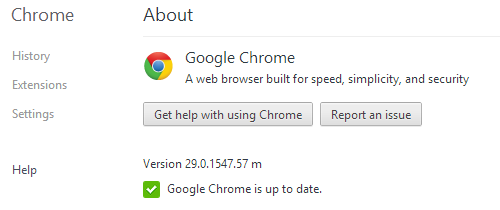
Google today released Chrome version 29 for Windows, Mac, and Linux. The new version features improved Omnibox suggestions, profile resetting, as well as new apps and extensions APIs. You can update to the latest release now using the browser’s built-in silent updater, or download it directly from google.com/chrome.
The biggest change is undoubtedly around how Omnibox suggestions work on the desktop. When the feature arrived in the beta channel, Google said that the improvements were “based on the recency of websites visited, so you’ll get more contextually relevant suggestions at the right time.”
We noted at the time this likely means that if you’ve been using Chrome for a very long time, omnibox will tailor its results more to what you’ve used it for in recent days and weeks as opposed to months and years. If you’ve only recently switched to Chrome, you likely won’t notice as big of a difference.
Next up is the addition of an option to reset your Chrome profile. This lets you bring your browser back to its original state without affecting your themes, bookmarks, or apps.
To use the new feature, follow these instructions:
- Click on the three-hotdogs menu icon and choose Settings.
- Click Show advanced settings.
- Click on the “Reset browser settings” button.
Chrome 29 for Android, which will be arriving soon, meanwhile has received WebRTC support, which enables real-time communication (such as videoconferencing) in the browser without installing any plugins. WebRTC consists of three independent components: getUserMedia (provides access to the user’s webcam and microphone), PeerConnection (sets up calls with the ability to traverse NATs and firewalls), and DataChannels (establishes peer-to-peer data communication between browsers).
As in previous releases, Google also included the usual bug fixes, stability improvements, and so on in Chrome version 29.0.1547.57. For more details, you can check out the full SVN revision log.
Last but certainly not least, Chrome 29 also addresses 25 security issues, of which Google chose to highlight the following:
- [$1337] [181617] High CVE-2013-2900: Incomplete path sanitization in file handling. Credit to Krystian Bigaj.
- [$500] [254159] Low CVE-2013-2905: Information leak via overly broad permissions on shared memory files. Credit to Christian Jaeger.
- [$1337] [257363] High CVE-2013-2901: Integer overflow in ANGLE. Credit to Alex Chapman.
- [$1000] [260105] High CVE-2013-2902: Use after free in XSLT. Credit to cloudfuzzer.
- [$1000] [260156] High CVE-2013-2903: Use after free in media element. Credit to cloudfuzzer.
- [$1000] [260428] High CVE-2013-2904: Use after free in document parsing. Credit to cloudfuzzer.
- [274602] CVE-2013-2887: Various fixes from internal audits, fuzzing and other initiatives (Chrome 29).
Google thus spent at least $6,174 in bug bounties this release and plugged nine more security holes compared to the previous Chrome release. These fixes alone should push Chrome users to upgrade as soon as possible.
Top Image Credit: casasroger/Flickr
Get the TNW newsletter
Get the most important tech news in your inbox each week.





